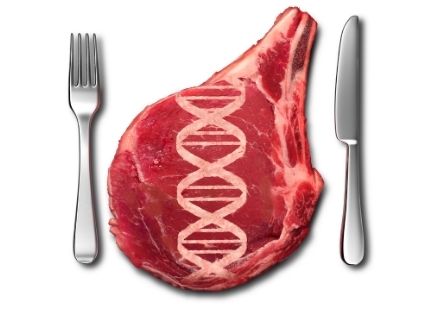Physical Address
304 North Cardinal St.
Dorchester Center, MA 02124

I thought that the “Is It Local?” comedic skit on the television show, Portlandia, took local dining to a new extreme. However, I recently came across an article about consumers who are willing to pay for a DNA test to confirm the source of their meet. This demand has pushed DNA tested, traceable, meat onto restaurant menus.
DNA-traceable meat is not a new technology, as it has been used in Europe and other countries for decades, but has been slow to catch on in America. This is beginning to change according to industry experts. These experts say that DNA-traceable meat can pay off in multiple ways, including boosting consumer confidence, upping the value of a dinner, and cutting the time needed to track recalled meats.
Tracy Tonning, executive chef at Blackstone restaurant in Iowa City, Iowa thinks that “People want to know where their food is coming from and this gives you a perfect avenue for you to go ahead and find out. You can trace it back to where it came from, where it was raised… It’s a security factor for the guest, as well as the chef.” Blackstone resturant is one of more than 11,000 locations being supplied with DNA-traceable beef by Richmond-based food distributor Performance Food Group. Performance Food Group is able to do DNA tracing because it is using smaller suppliers dedicated to producing meat for the company.
Performance Food Group tested their products in some of the steakhouses it supplies, as well as surveying outside other restaurants. These surveys and tests showed consumers were willing to pay $2 or $3 more for the same cut meat if various “pleasers” were added — a higher quality of meat, traceability, as well as how the animals were treated and fed. This value only came if the customer knew about it.
Phil Lempert, a food marketing expert says that DNA-traceable meat is ”really good marketing. The awareness in general is, in my opinion, at the highest level it’s ever been — from a health stand point, from a food safety standpoint. We really need to rebuild confidence in our food and technologies like this help that.”
The process work because workers take DNA samples at processing point as well as other places along the supply chain. The samples are gathered to determine the specific animals each product came from. In addition information kept by farmers and others involved in the raising and processing of the animals can be added to give a more complete history.
In addition to rebuilding confidence in our food chain DNA tracing would also provide a faster way to identify the source of contaminated meat in the event of a recall. This could speed up the process from weeks or months to just hours. For example, it can identify the multiple animals whose parts were used in ground beef. Ground beef can be made up of meat from 1,000 different animals in a 10-pound box. DNA-tracing could point to particular animals and could even reduce the amount of meat affected by recalls, which generally are tremendously costly for producers, suppliers and others.